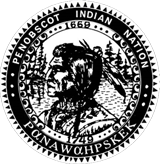Search Results for water
Water Quality Sampling Sites
Eurasian water-milfoil
Eurasian water-milfoil(Myriophyllum spicatum) Description: Branching stems of Eurasian water-milfoil emerge from thick, spreading roots. Eurasian water-milfoil does not form winter buds. Habitat: Eurasian water-milfoil is an extremely well adapted plant, able to thrive in a wide variety of environmental conditions. It grows well in still and flowing waters, endures mild salinities . . .
Variable water-milfoil
Variable water-milfoil (Myriophyllum heterophyllum) Description: Variable water-milfoil is an underwater, plant with branching stems rising out from above the surface with compact, spreading roots. Habitat: Variable water-milfoil is an extremely well adapted plant, able to thrive in a wide variety of environmental conditions. It grows well in still and flowing waters, and can survive . . .
Brazilian Waterweed
Description: Underwater stems rise from trailing, unbranched roots. Bright to dark green leaves are thickly arranged in groups of 4 to 6 leaves along slender stems. (Note: some lower leaves may occasionally occur in opposite pairs or in groups of 3 leaves.) The small flowers (2 cm in diameter) have three . . .
Water Chestnut
Description: Water chestnut has two distinct leaf types. The floating leaves are somewhat triangular (or fan shaped) in form, with clearly serrated along the outside edges. The upper surface of the leaf is glossy, the undersides covered with soft hairs. Habitat: Water chestnut grows in the floating-leaf and underwater plant community. It . . .
Bugs in the Water
Many of the insects you see start their life in water. The young stage of these insects is usually called a larvae or nymph. Eventually the ones who are going to, leave the water and the skeleton they used there. They have different ways of coming to land – some swim . . .
Penobscot Waters
A watershed is like a basin or a bowl that is made up of land, with the higher spots (like mountains) being the edges. When precipitation falls on this land some of it moves down hill, gets to lower points and collects into small streams – each of which has its own . . .
Water Quality Standards
Water quality standards are the foundation for protecting rivers, streams, lakes, ponds and wetlands from pollution. Water quality standards have 3 basic pieces: Penobscot people have resided upon Penobscot Waters and have depended upon fish, plants, and wildlife from those waters for their physical, cultural, and spiritual survival from time . . .
Water (nə̀pi) Song
This Penobscot (nepi) water song was written by Gabriel Paul at the request of his aunt after hearing Doreen Day’s Ojibwe Nibi (Water) Song and her encouragement for other tribes to create their own song. Gabe is from the Crow and Eel Clan and has been learning our language from a very young . . .
Water (nə̀pi) Resources
The Water Resources Program staff protect the health of Penobscot citizens and how they use their waters by conducting monitoring work that will: Without good quality data on the condition of the rivers, streams, lakes and wetlands on Penobscot Nation land, and sections of water that flow into Penobscot Nation waters, we would . . .
